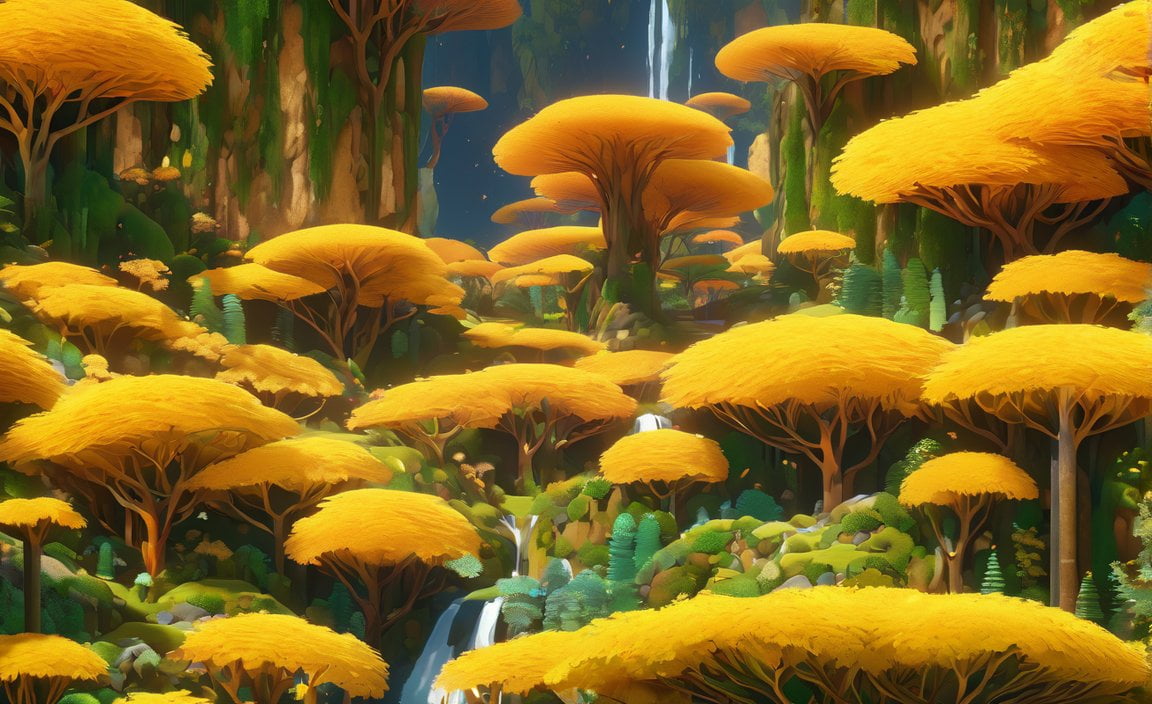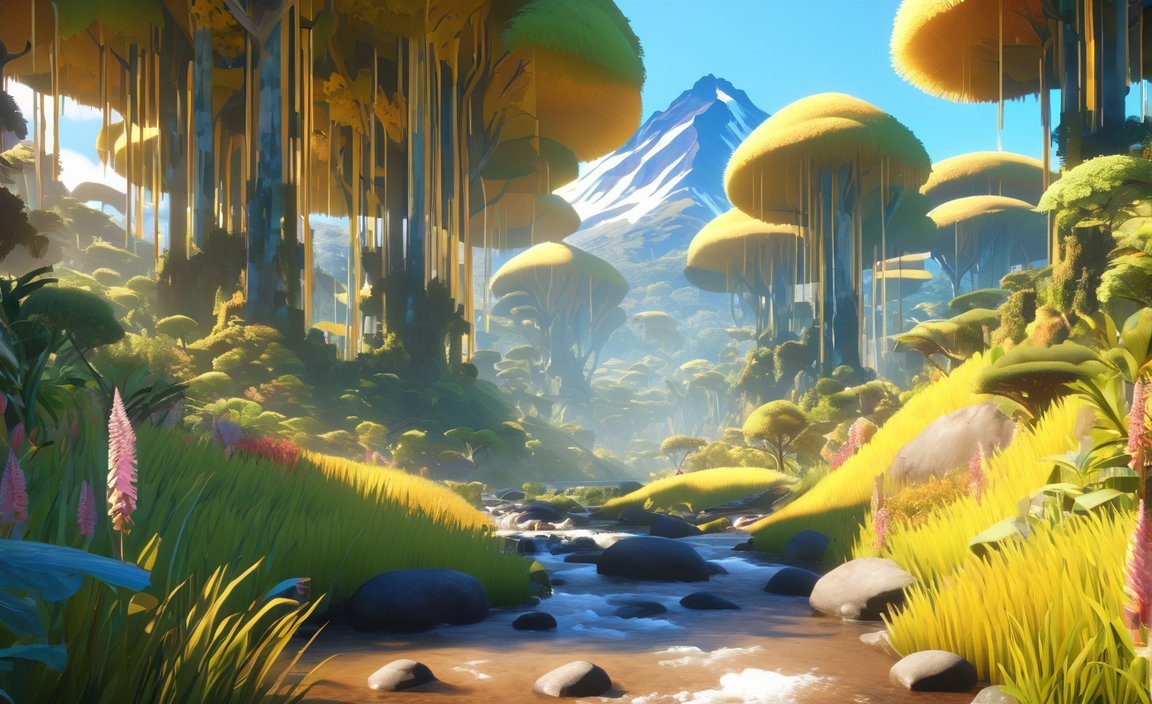Discovering New Zealand’s Diverse Biomes: A Closer Look at the Country’s Ecological Systems

New Zealand, a land of breathtaking landscapes and unique biodiversity, boasts a remarkable array of biomes that span from coast to coast. From the lush temperate forests of its North and South Islands to the rugged alpine tundra of the Southern Alps, this island nation is a haven for environmental enthusiasts and nature lovers alike. Join us as we embark on a journey to explore and understand the intricacies of New Zealand’s biomes, delving into the fascinating ecological systems that make this country so special.
Key Takeaways:
- New Zealand’s biomes include temperate broadleaf and mixed forests, montane grasslands and shrublands, subantarctic islands tundra, and Chatham Islands temperate forest.
- These biomes support diverse flora and fauna, including many endemic species.
- The temperate broadleaf and mixed forest biome covers most of the main islands and is home to various exotic plants and animals.
- Montane grasslands and shrublands can be found in high-altitude areas above the tree line and are dominated by tussock grasses.
- Subantarctic islands tundra is characterized by cold and windy conditions, and low vegetation, and is found in island groups south of New Zealand.
- Chatham Islands temperate forest is a unique biome on the Chatham Islands, consisting of endemic plants and animals.
- Natural disturbances and historical events have shaped the distribution of species in New Zealand.
- Factors such as bedrock, climate, vegetation, and time have influenced the development of New Zealand’s soils, leading to variations in depth and composition.
- New Zealand’s climate is diverse due to temperate latitudes, prevailing westerly winds, the oceanic environment, and the presence of mountains.
- New Zealand aims to achieve zero greenhouse gas emissions by 2050 as part of its climate policy.
- The Ministry for the Environment has produced reports on the country’s environmental state in 1997, 2007, and 2016.
- The New Zealand environment has been featured in films and documentaries such as the “Wild South” series and “He Ao Wera.”
Name all of New Zealand’s Biomes
New Zealand, with its stunning landscapes and diverse ecosystems, is home to several unique biomes that offer a glimpse into the country’s rich ecological systems. From temperate broadleaf and mixed forests to subantarctic islands tundra, each habitat showcases a distinct set of characteristics, flora, and fauna. In this article, we will delve into the various biomes that make up the tapestry of New Zealand’s natural environment.
1. Temperate Broadleaf and Mixed Forest
The temperate broadleaf and mixed forest biome is the most common and extensive in New Zealand, covering the majority of the main islands. This biome is characterized by a rich variety of deciduous and evergreen trees, including beech, kauri, rimu, and totara. These forests provide habitat for a wide range of plants and animals, both native and introduced. From the iconic kiwi bird to the majestic tree ferns, this biome is a treasure trove of biodiversity.
2. Montane Grasslands and Shrublands
As we ascend to higher altitudes, we encounter the montane grasslands and shrublands biome. Found above the tree line, these areas are dominated by tussock grasses, which form vast rolling hills of green. This unique biome supports a specialized group of plants and animals adapted to the harsh alpine conditions. It is here that you may spot the charismatic alpine parrot, the kea, with its vibrant plumage and playful behavior.
3. Subantarctic Islands Tundra
South of mainland New Zealand lie the subantarctic islands, where the tundra biome takes hold. These remote and windswept islands are home to an array of cold-adapted species. The subantarctic islands tundra biome, characterized by low vegetation and chilly conditions, supports several marine mammals, including fur seals and sea lions. It also provides critical breeding grounds for numerous seabird species, such as penguins and albatrosses.
4. Chatham Islands Temperate Forest
To the east of New Zealand, on the Chatham Islands, lies a distinct biome known as the Chatham Islands temperate forest. This unique habitat is composed of endemic plants and animals that have evolved in isolation from the mainland. The Chatham Islands serve as a sanctuary for a variety of threatened and endangered species, including the critically endangered Chatham Island black robin.
Understanding the Significance of New Zealand’s Biomes
The biomes of New Zealand showcase the country’s remarkable ecological diversity and serve as a refuge for many endemic species found nowhere else in the world. These biomes are a testament to the intricate relationships between flora, fauna, and their habitats. They also highlight the impact of natural disturbances and historical events on shaping the distribution and evolution of species.
New Zealand’s commitment to conservation and sustainable practices is crucial in safeguarding these biomes and their unique biodiversity. By understanding and appreciating the ecological significance of each biome, we can work towards preserving these fragile ecosystems for future generations.
In conclusion, New Zealand’s biomes – including the temperate broadleaf and mixed forest, montane grasslands and shrublands, subantarctic islands tundra, and Chatham Islands temperate forest – offer a captivating insight into the country’s diverse and extraordinary natural heritage. Let us cherish and protect these biomes, for they are the true treasures of this land.
Here are some interesting links for you to explore:
- 10 facts about Britain: Discover fascinating facts about Britain, from its rich history to its iconic landmarks.
- 10 fun facts about Ontario Canada: Uncover the hidden gems of Ontario Canada with these fun and surprising facts.
- 10 fun facts about Christmas in Italy: Dive into the festive spirit by learning interesting facts about Christmas traditions in Italy.
- Christ the Redeemer Rio de Janeiro Brazil coordinates: Find the precise coordinates of the majestic Christ the Redeemer statue in Rio de Janeiro, Brazil.
- Dirty geography pick up lines: Add a little humor to your geography knowledge with these cheeky pick-up lines.
- Geographical pick up lines: Impress your fellow geography enthusiasts with these clever pick-up lines based on geographical terms.
- National Geographic pick up lines: Combine your love for National Geographic with some smooth pick-up lines that are sure to grab attention.
- Is Rio de Janeiro a dangerous city: Explore the safety and security aspects of Rio de Janeiro, one of Brazil’s most vibrant cities.
- All of New Zealand’s biomes: Journey through the diverse biomes of New Zealand and learn about its unique natural landscapes.
Feel free to click on any of the links above to delve deeper into these intriguing topics!
Grasslands: Unique Features and Indigenous Species
New Zealand’s grasslands are a crucial part of the country’s ecological makeup, accounting for approximately 13% of its plant cover and biodiversity. Over the past 10,000 years, these grasslands have developed alongside areas of woody vegetation, forming a vibrant mosaic across the landscape. However, the conversion of grasslands for agricultural purposes has led to their decline, making conservation efforts more important than ever.
Tussock grasses, such as species of Festuca and Poa, dominate New Zealand’s grasslands. These resilient plants play a vital role in the ecosystem, providing protection and enabling them to survive fire and drought. With their unique adaptations, tussock grasses have become an iconic feature of the New Zealand landscape.
Despite the dominance of tussock grasses, New Zealand is also home to a remarkable diversity of other native grass species. In fact, there are 30 different species of native tussock grasses, including red tussock, silver tussock, and hard tussock. Each of these species contributes to the overall biodiversity and ecological significance of the grasslands.
One distinctive characteristic of New Zealand’s grasslands is their transition from indigenous to exotic grassland cover. Currently, exotic grassland covers about 40% of the country, representing a significant change in the landscape. This transition has implications for the native flora and fauna that rely on the unique habitats provided by the indigenous grasslands.
Efforts are underway to conserve the remaining grasslands for their ecological value. Conserving these habitats is crucial for protecting the indigenous species that call the grasslands home. By safeguarding the grasslands, we can protect the biodiversity they support and maintain the delicate balance of New Zealand’s ecosystems.
Key Takeaways:
– New Zealand’s grasslands cover approximately 13% of the country’s plant cover and biodiversity.
– Tussock grasses, such as species of Festuca and Poa, dominate the grasslands and provide crucial protection against fire and drought.
– There are 30 different species of native tussock grasses in New Zealand, including red tussock, silver tussock, and hard tussock.
– The dominance of exotic grassland cover poses challenges for the native flora and fauna that rely on indigenous grasslands.
– Conservation efforts are underway to protect the remaining grasslands and the unique species that inhabit them.
Sources:
– “Grasslands” – Environment Guide [source]
– “Grasslands” – Te Ara Encyclopedia of New Zealand [source]
Alpine Tundra: Harsh Conditions and Adaptations
Alpine tundra is a fascinating natural region characterized by its high elevation and unforgiving climate. This biome can be found in mountainous areas across the globe, including the stunning landscapes of New Zealand. In this article, we will delve into the harsh conditions and remarkable adaptations of the alpine tundra biome in New Zealand.
The Climate of Alpine Tundra
At high elevations, the climate of alpine tundra becomes increasingly harsh. The temperature drops significantly, and strong winds become an everyday occurrence. The average weather, known as the alpine climate, becomes colder as altitude increases. In fact, moving up 100 meters on a mountain is equivalent to moving 80 kilometers towards the poles. However, localized factors such as proximity to oceans can influence the climate as well.
The Flora and Fauna of Alpine Tundra
The flora of alpine tundra consists of dwarf shrubs that grow close to the ground as a result of the intense radiation, wind, cold temperatures, snow, and ice. The high elevation and adverse climate make it unsuitable for trees to grow, and instead, alpine tundra transitions to sub-alpine forests below the tree line. This unique vegetation is well-adapted to survive in these extreme conditions.
Similarly, the wildlife of alpine tundra has also developed remarkable adaptations to cope with the harsh environment. While there is no single animal species common to all areas of alpine tundra, several fascinating creatures can be found in these challenging habitats. The kea, marmot, mountain goat, bighorn sheep, chinchilla, Himalayan tahr, yak, snow leopard, and pika are some examples of the resilient animals that have adapted to survive in the rugged and broken landscapes of the alpine zone.
The Significance of Alpine Tundra
The alpine tundra biome in New Zealand plays a crucial role in the country’s ecological systems. It provides a unique habitat for specialized plant and animal species, showcasing the incredible biodiversity found in this region. Furthermore, alpine tundra contributes to water regulation as snowfields accumulate and melt, contributing to streamflow and downstream water supply. Conserving this fragile ecosystem is vital to maintaining biodiversity and the overall ecological balance in mountainous regions.
Key Takeaways:
- Alpine tundra is a natural region found at high elevations with a harsh climate that does not support tree growth.
- The climate of alpine tundra is characterized by cold temperatures and strong winds.
- The flora of alpine tundra consists of dwarf shrubs, while the fauna includes various resilient animals adapted to survive in these extreme conditions.
- Alpine tundra provides a unique habitat for specialized plant and animal species and plays a role in water regulation.
- Conservation of the alpine tundra biome is crucial for maintaining biodiversity and ecological balance.
For more information, you can visit the following sources:
1. Wikipedia: Alpine tundra
2. Britannica: Alpine tundra
Wetlands: Ecological Importance and Threats to Survival
Wetlands are unique ecosystems that play a crucial role in supporting diverse plant and animal life. They can be found in both freshwater and estuarine environments, providing essential habitats for various species. However, wetlands in New Zealand and around the world are facing numerous threats to their survival. In this article, we will explore the ecological importance of wetlands and the challenges they face in terms of conservation.
Ecological Importance of Wetlands
1. Water Quality Improvement: Wetlands are natural filters, improving water quality as water flows into them. The flow rate decreases, allowing particles to settle out, while plant surfaces act as filters, absorbing solids and adding oxygen to the water. Additionally, growing plants help remove excess nutrients, contributing to the purification of downstream environments[^1][^2].
2. Biodiversity Conservation: Wetlands are home to a diverse array of plants and animals, including many rare and endangered species. They provide crucial habitats for a large proportion of New Zealand’s native plants, making them essential for biodiversity conservation[^3].
3. Climate Regulation: Wetlands play a vital role in regulating the global climate. They help maintain the hydrological cycle and act as carbon sinks by storing significant amounts of carbon dioxide. Wetlands also provide flood control by absorbing excess water during heavy rainfall events[^4].
4. Ecosystem Services: Wetlands offer various ecosystem services, including water supply, groundwater recharge, sediment retention, and shoreline stabilization. These services are essential for supporting human well-being and maintaining the overall health of the environment^5.
Threats to Wetland Survival
1. Loss of Wetlands: Over 90% of New Zealand’s wetlands have been drained or filled for agriculture, urban development, and other purposes. This loss of wetland habitat is one of the most significant threats to their survival^6.
2. Habitat Degradation: Wetlands face degradation due to pollution, invasive species, and altered hydrological regimes. Pollution from agricultural runoff and urban activities can contaminate wetland waters, negatively impacting plant and animal life. Invasive species can outcompete native species and disrupt wetland ecosystems. Changes in hydrological patterns, such as dams and water extraction, can also adversely affect wetland health[^7].
3. Climate Change: Wetlands are susceptible to the impacts of climate change, including sea-level rise, increased flooding, and altered precipitation patterns. These changes can lead to changes in the hydrology and salinity levels of wetlands, further threatening their biodiversity and overall health^8.
Conservation Efforts and Restoration
1. Wetland Management: Effective management strategies are necessary to protect and conserve wetlands. Monitoring wetland condition and trends, employing indicators, and implementing restoration projects are crucial steps in ensuring their survival[^7].
2. Ramsar Convention on Wetlands: The Ramsar Convention is an international treaty aimed at conserving and sustainably using wetlands and their resources. New Zealand is a signatory to this convention and has committed to protecting wetlands through various conservation measures[^9].
By understanding the ecological importance of wetlands and the threats they face, we can work towards their preservation and ensure the continued functioning of these valuable ecosystems.
Key Takeaways:
– Wetlands are crucial for water quality improvement, biodiversity conservation, climate regulation, and ecosystem services.
– Loss of wetlands, habitat degradation, and climate change pose significant threats to their survival.
– Conservation efforts, wetland management, and international agreements like the Ramsar Convention are essential for protecting and restoring wetland ecosystems.
References:
[^1]: Department of Conservation
[^2]: Te Ara Encyclopedia of New Zealand
[^3]: National Center for Biotechnology Information
[^4]: Environment Guide
[^7]: National Center for Biotechnology Information
[^9]: Department of Conservation

FAQ
Q1: What are the typical biomes found in New Zealand?
A1: The typical biomes in New Zealand include temperate broadleaf and mixed forest, montane grasslands and shrublands, subantarctic islands tundra, and Chatham Islands temperate forest.
Q2: How does New Zealand’s unique biota contribute to its unusual ecosystems?
A2: New Zealand’s biota, consisting of endemic flora and fauna, evolved in near isolation from the rest of the world. This isolation has led to the development of unique ecosystems and classifications, making New Zealand’s biota one of the most unusual in the world.
Q3: What natural disturbances have shaped the distribution of species in New Zealand?
A3: Natural disturbances such as landslides, floods, fires, volcanic eruptions, and glacial maximums have played a role in shaping the distribution of species in New Zealand’s ecosystems.
Q4: How does the climate in New Zealand vary across the country?
A4: New Zealand’s climate is influenced by temperate latitudes, prevailing westerly winds, the oceanic environment, and the presence of mountains, notably the Southern Alps. These factors result in diverse climatic conditions across different regions of the country.
Q5: What is the New Zealand government doing to address climate change and environmental issues?
A5: New Zealand has pledged to reach zero greenhouse gas emissions by 2050 as part of its climate policy. The Ministry for the Environment regularly produces reports on the state of the environment since 1997 to assess and address environmental issues.
- SYBAU See You Baby Meaning: Gen Z Slang Evolves - July 1, 2025
- Unlock Your Inner Youth: Lifestyle Secrets for a Vibrant Life - July 1, 2025
- Decode SYBAU Meaning: Gen Z Slang Explained - July 1, 2025






